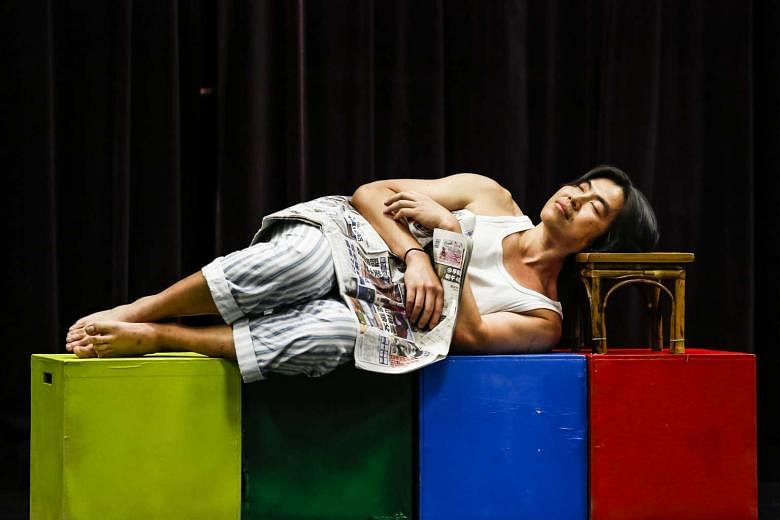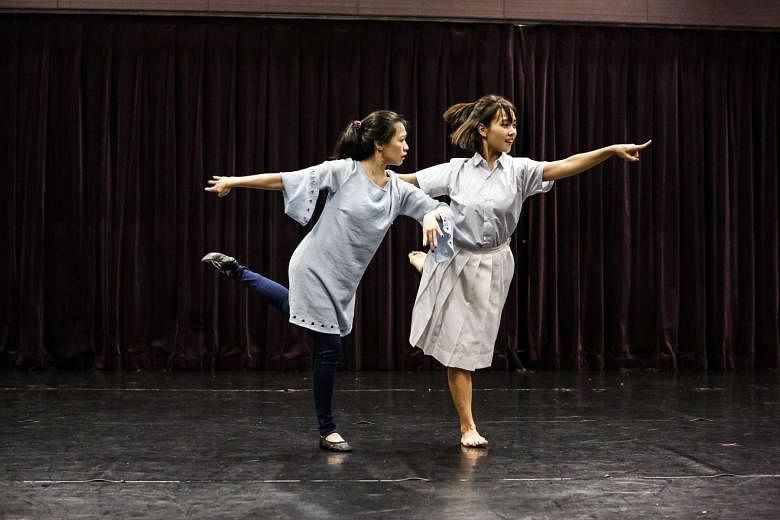The colourful blocks of Rochor Centre - which will soon vanish to make way for the North-South Expressway - and the memories of its residents will spring to life at a dance performance tomorrow.
With its show Muted Colours Of Rochor, the National University of Singapore (NUS) Chinese Dance group is presenting an array of works inspired by the nearly 40-year-old commercial and housing estate.
Built in 1977, the cluster of four Housing Board flats, each painted mainly in red, yellow, blue or green, will be demolished by the end of the year.
NUS Chinese Dance president Choo Wee Lin says: "Since this landmark will soon be torn down, we felt that commemorating it through dance would be a unique way to pay tribute to such an integral part of Singapore's history."
-
BOOK IT /MUTED COLOURS OF ROCHOR
-
WHERE: University Cultural Centre Theatre, National University of Singapore, 50Kent Ridge Crescent
WHEN: Tomorrow, 7.30pm
ADMISSION: Free with registration at bit.ly/EMCC-MutedColoursofRochor
The six dance pieces in the show were created by alumni and undergraduate choreographers who headed to Rochor Centre in June for research and interviews to better capture the spirit of the estate.
Muted Colours, which is presented by the NUS Centre for the Arts, is part of the ExxonMobil Campus Concerts series of free performances. It explores themes such as identity, memory and separation. Dancers play a host of colourful characters, from young lovers to a mother recalling her children's years growing up in the estate.
In alumnus Michael Wong's Rochor - Through The Decades, dancers will express their emotions about various stages of the estate's history, including its heyday as a shopping haven for Malaysian express bus passengers and the relocation of its residents.
Meanwhile, Esther Seah and Goh Jing Ying's work, Our Memories, In Those Colours, portrays the different people who grew up together in the neighbourhood and depicts how their memories bind them to the place they have for so long called home.
Seah, 21, a life sciences student, says: "We hope to inject some positivity into the performance through our piece with the idea that - despite the demolition - the memories of the place will live on."
When they visited Rochor Centre in early June, the sight of the playground, the emptying void decks and the iconic four-coloured buildings ignited their imagination and they decided to use memories of these common areas as a backdrop for their piece.
Beyond seeing the colourful buildings on social media, Seah did not know much about Rochor Centre or its history.
But working on Muted Colours, as the choreographers swopped ideas and tidbits of information, not only taught her more about the estate, but also gave her an unexpected link to her heritage.
Before the high-rises were built, she learnt that the area used to be a Hokchia-dominated neighbourhood. "This was significant to me as I'm a Hokchia as well. I unwittingly got to know more about my own dialect through this process," she says.
Psychology student Yong Yoke Kay, for her piece Home, found inspiration in the many elderly people she spotted around the estate.
"It felt like they were at home. When you see these people in their element, it makes you wonder how they and what makes them fit in so well," says the 21-year-old.
It made her ponder what elements made a place a home: "Is it the physical infrastructure, the facade, the memories, the kinship and relationship with certain people or objects? I would like the audience to ponder this sort of questions as well. Moving house, or relocating, is quite a common occurrence and this piece explores the concept of home."
Meanwhile, dance instructor Ah Sen Hok Fen, 35, found his muse in long-time Rochor resident Annie Lim Sok Keow. The 55-year-old retired baker, who now works as a part-time administrative assistant, moved to Rochor Centre when she was 16 and has lived there since.
For his piece Fading Stage: Pining Dreams, Ah Sen built the choreography around Annie and the people important to her, weaving together elements of contemporary and Chinese dance and bringing in Xinyao songs and Teochew dialogue.
"I wanted to capture what it meant to Annie to be leaving Rochor and saying goodbye to the place. Her memories of Rochor are mostly of her mother, Tan Soon Gek, as she was the main pull factor that always brought her back to the place," he says.
"I decided to focus mainly on her memories of her mother and the bond she had with her while at Rochor."
Ah Sen, who is co-founder and resident choreographer of Xin Yi Dance Company, interviewed Annie about her life, pored over her old photos and recorded her recounting different parts of her life in Teochew.
"What came easily to me was piecing together all the different parts of her life and putting them in a dance choreography. But that was also the difficult part as I had to trim the number of scenes or events within the time frame," he says.
"Maybe next time I could do a whole musical about her life?"



